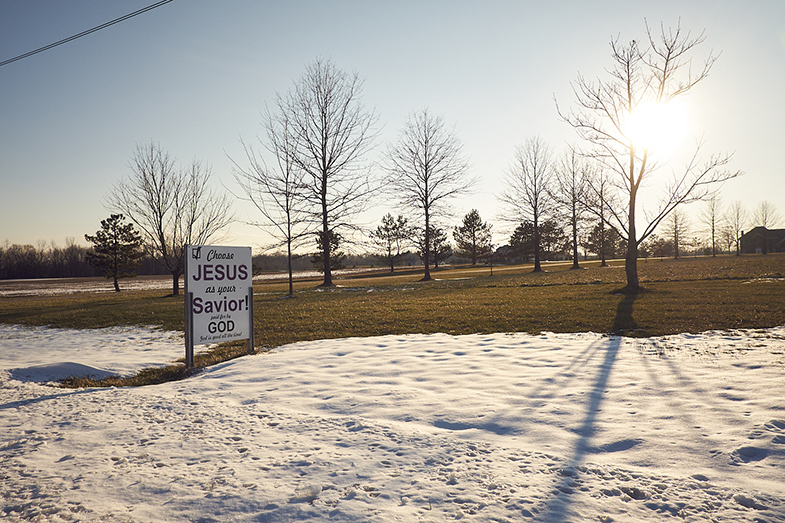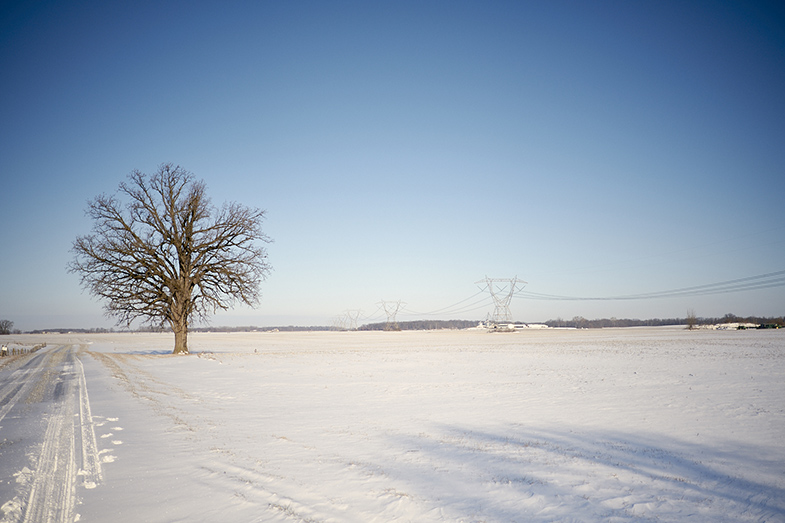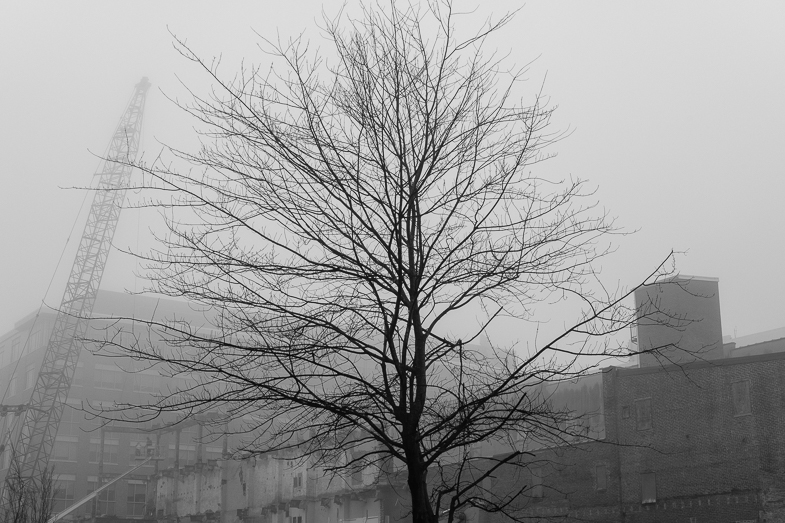
For this project, Ohio in Rapture, I instinctually roamed from scene to scene across Ohio. I slowly became aware of the force that was pushing me forward. As my collection of photos grew, I found that what was stirring in me were memories of my father. He was a workaholic that ran the family blue-collar business until he passed unexpectedly in 2001, just before I turned 25. Perhaps more significantly, he passed before life could show me his imperfections and take him off the pedestal so many parents start on.
Perhaps because most of these memories are from a child’s perspective, the most lucid are those raised by the familiar topography of Ohio. I often found sacred memories unlocked by the light and form of the landscape.
The smell of my dad’s car in the early-morning drive to his shop was an unmistakable combination of machine grease and sweat. The interior was a disheveled mix of 80-plus-hour work weeks and a losing battle to keep the cloth interior clean. The rising sun revealed a mixed landscape passing by as we sped along nearly empty roads.
Rural decay; family businesses made of hope; working and upper class neighborhoods ebb and flowed between strip malls and forgotten things. Shuttered factories leveled and paved over to serve as parking for new factories. Family farms cut into a silty clay soil that never forgets a bootprint. The smell of industry always nearby, belching and seeping into a gradient of nature’s last thresholds where unseen songbirds celebrate their morning peals.
The rust has changed and shifted over the years, but the light holds true.
Ohio is a land where every collar has an unabashed tinge of blue, without grand gesture or proclamation. As I hold these scenes, so too I hold my father.
— Kier Selinsky, Medina, Ohio, USA


















